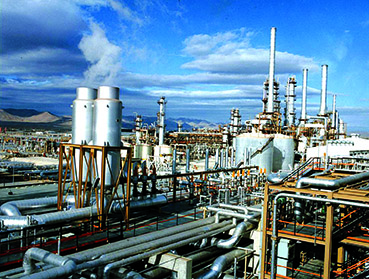The significance of improving house construction standards as well as developing a proper vision for training civil and construction engineers were underlined by the minister of roads and urban development on Thursday.
In an inauguration speech delivered at the third conference on the application of new technologies in buildings, held August 11-12 in Mashhad, Abbas Akhundi attributed the development of new technologies to a number of different factors such as appropriate training; performance of economic enterprises; industrial, social, and cultural structure of the country and availability of skilled workers among other things.
However, the minister said in the field of house construction in Iran, three factors have been mostly ignored: Economic structures, cultural basis, and an engineering training system.
Lack of Proper Engineering Vision
“Our ancient architecture used to be far more sophisticated than nowadays, as the life cycle of houses went beyond a century, but now it has decreased,” said Akhundi.
Thus, the problem is not lack of required knowledge or skills, as “besides inheriting a rich ancient architecture from over a thousand years ago, syllabus of engineering courses in Iranian universities match those of high ranking universities in the world.”
So the weakness in new architecture is partly related to lack of appropriate policies.
The minister criticized Iran’s vision for 2025 (1404 Outlook) saying the vision depicts no picture of the skills and knowledge that must be acquired by architects by 2025.
The minister highlighted the need to undertake new methods in Iran to improve technical education.
“We need to specify the characteristics of our civil engineers in 2025,” said the minister, adding that the required skills regarding new technologies for improving the life cycle of buildings goes beyond academic education.
New Building Technologies Need to be Integrated into Lifestyles
The minister also said that we have not combined new building technologies with people’s lifestyles yet, though the ICT (information and communication technology) sector has been more successful in this regard.
“New technologies need to find their ways into ordinary people’s houses; communication devices such as cell phones are now part of everyday life of ordinary people.”
The minister said that we need to “localize” technologies, “which does not mean we just need to train engineers, but that we should also mix them with people’s lifestyles.”
For applying new technologies in house building, two serious weaknesses exist, as outlined by Akhundi.
First, these technologies are not consistent with household income; as an average Iranian family cannot afford to buy a house that meets the standards of new technologies.
The second problem is lack of effective “demand” in the housing sector, because in Iran’s housing sector, demand is considered identical to “need”, a drawback that has put the sector in severe trouble.
“From a macroeconomic point of view, demand and supply must not go through extremes in this sector, otherwise the sector would be damaged seriously,” as is the case in Iran now; a situation that has led to “rising house prices, inflation, excess supply, and average people’s inability to buy houses.”
He said that the ministry has considered the two weaknesses in its comprehensive housing plan which has been recently proposed to the government.
However, setting obligatory standards will not be a proper solution for the construction sector, said the minister, as there are already too many obligations in this sector as compared with developed countries, “we aim to promote our construction standards, in a way that new technologies are integrated into people’s lifestyles.”
He further recommended construction engineers heed economic and cultural aspects besides technical ones when building houses.


